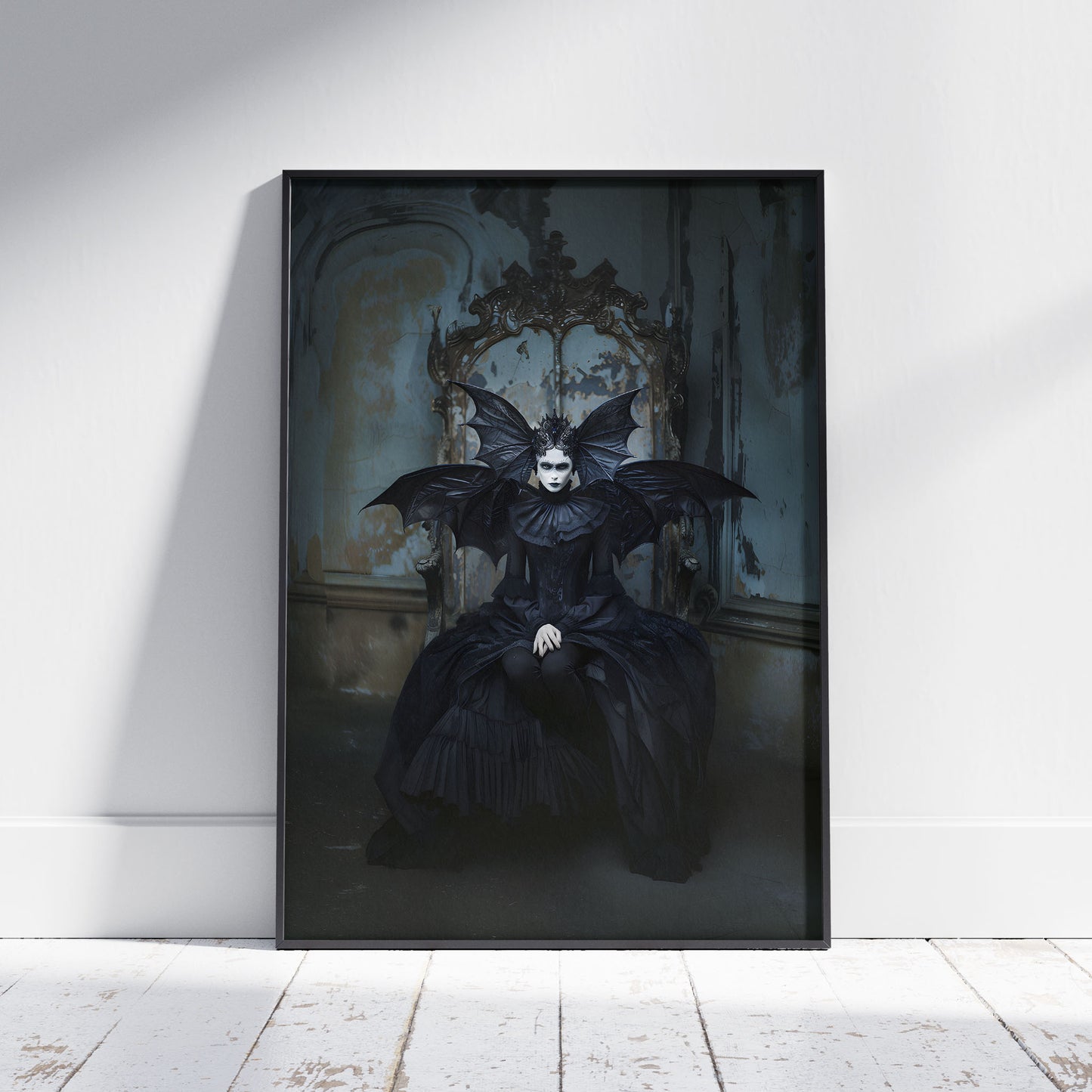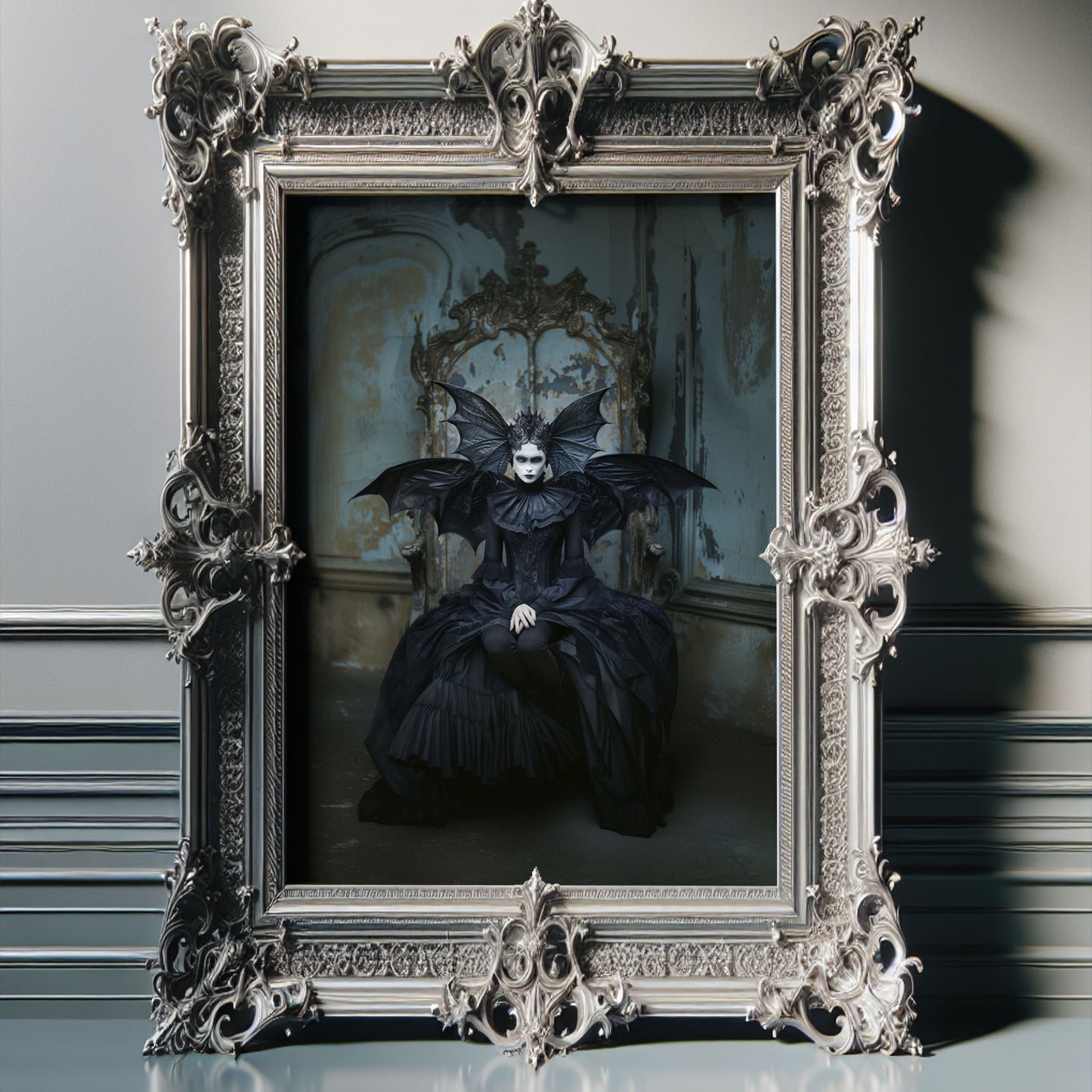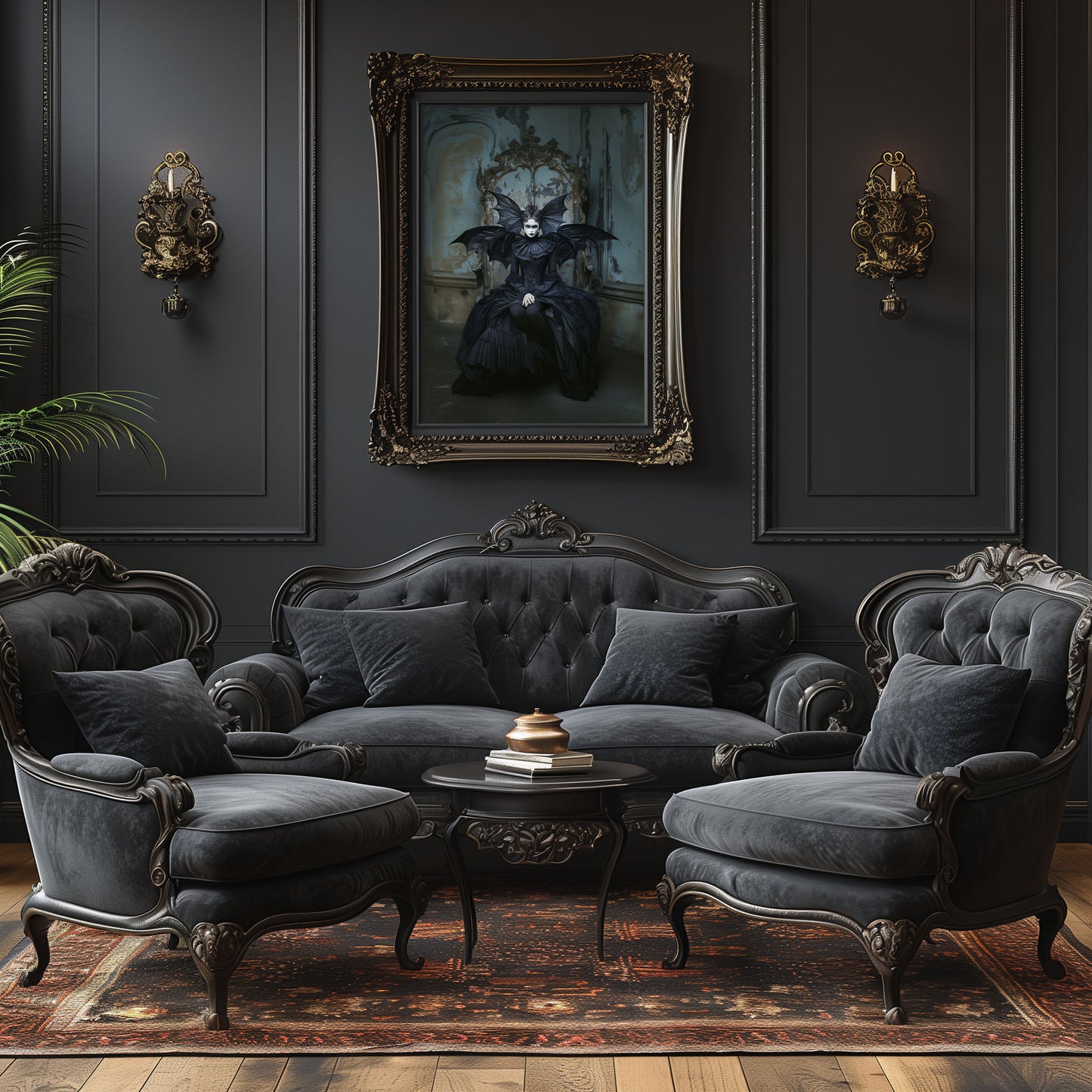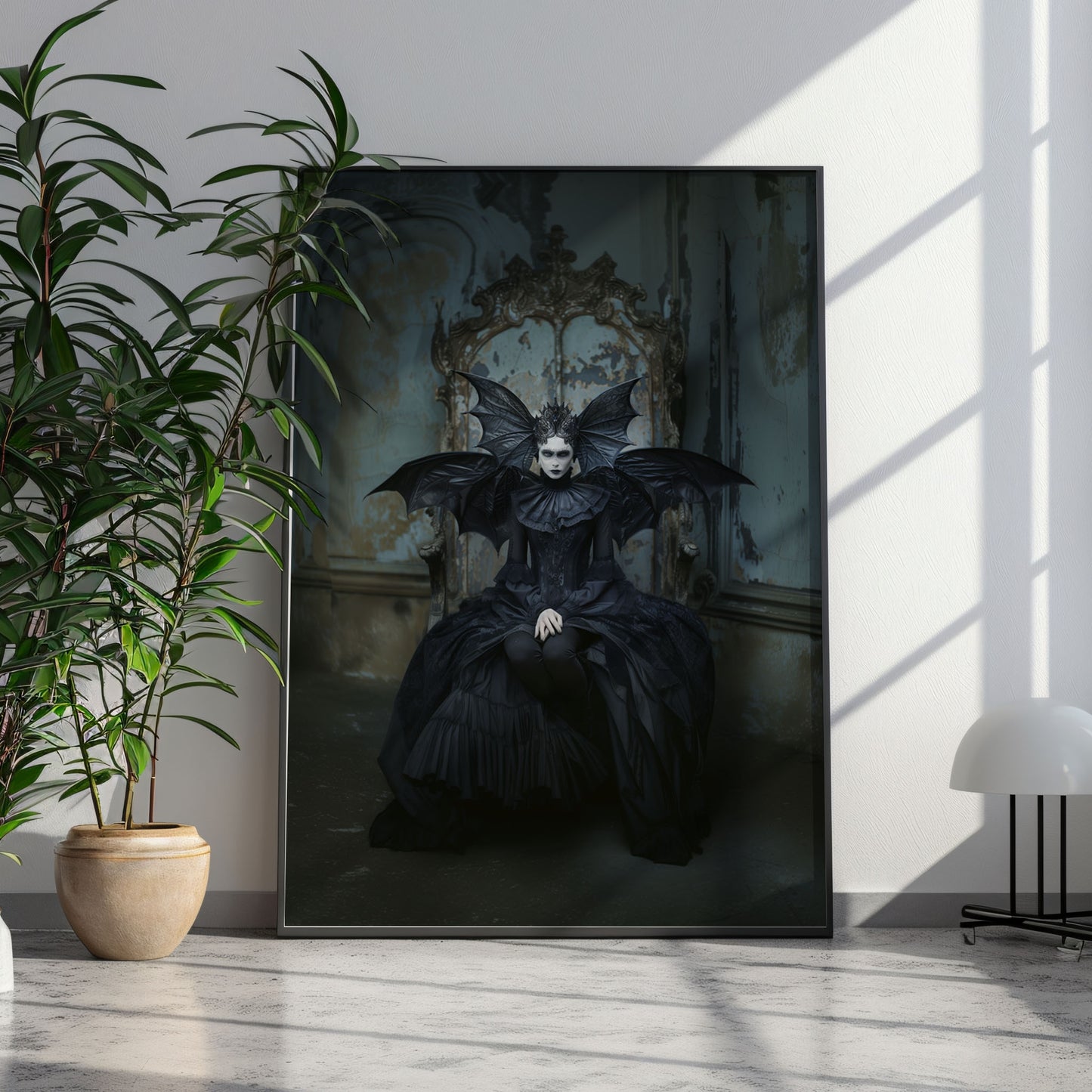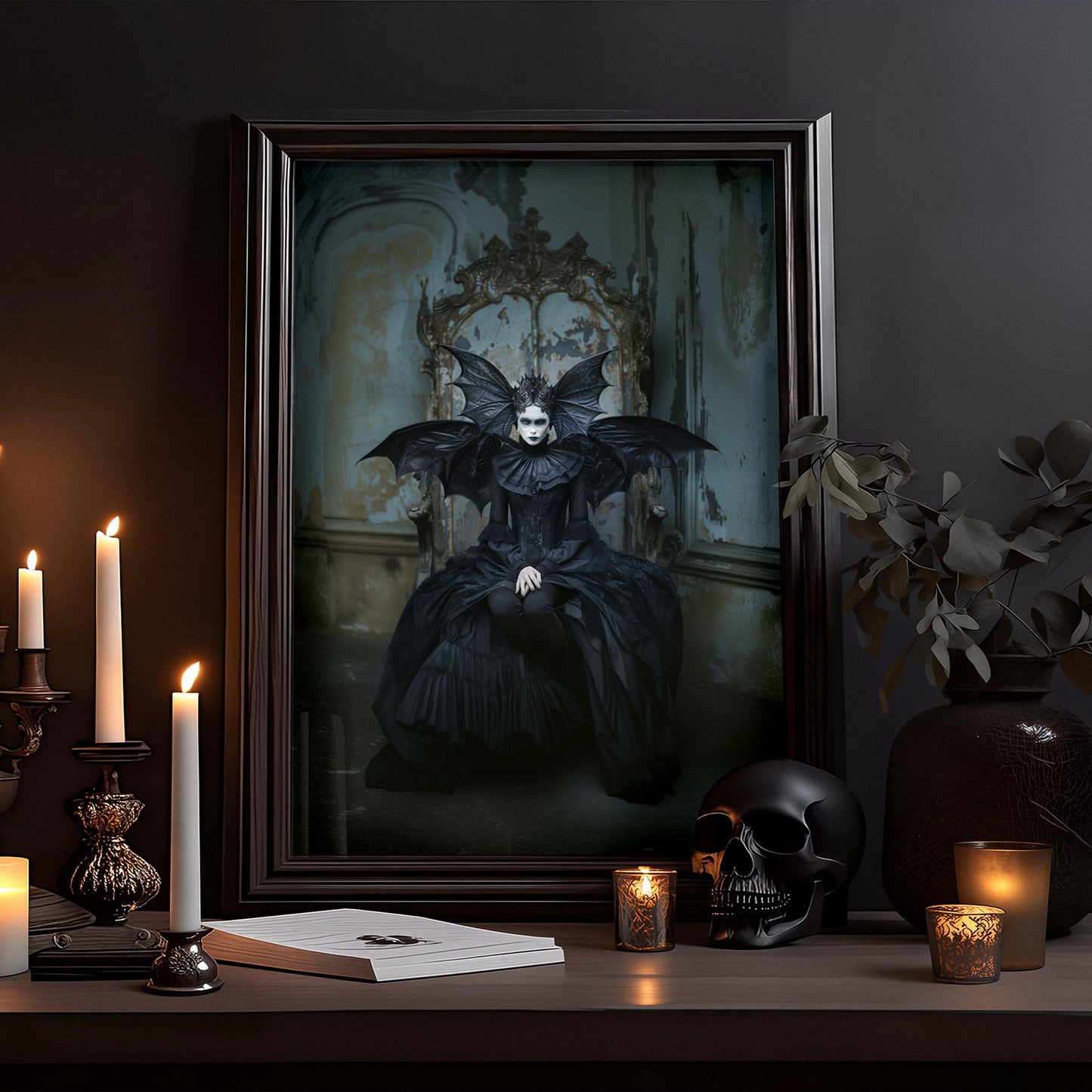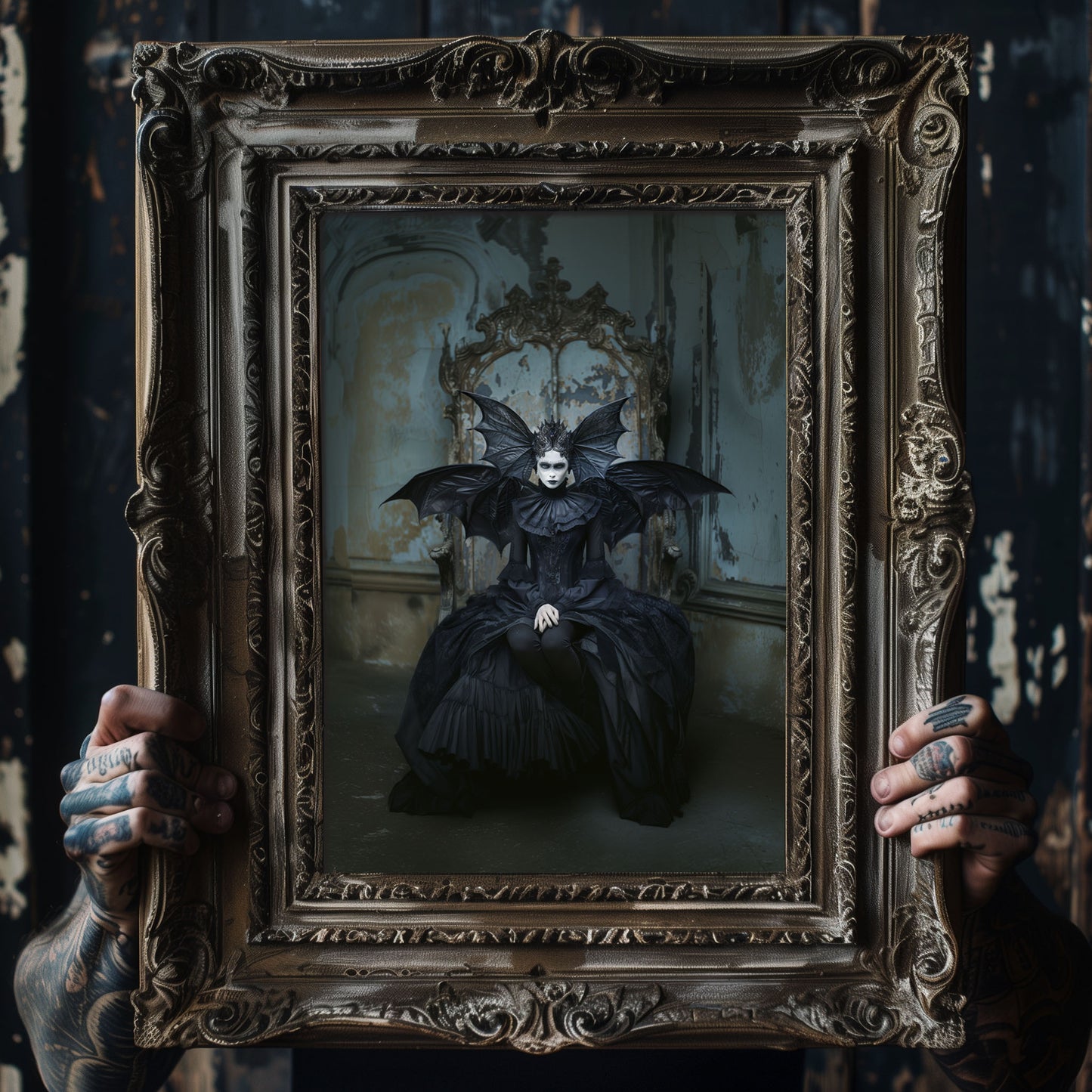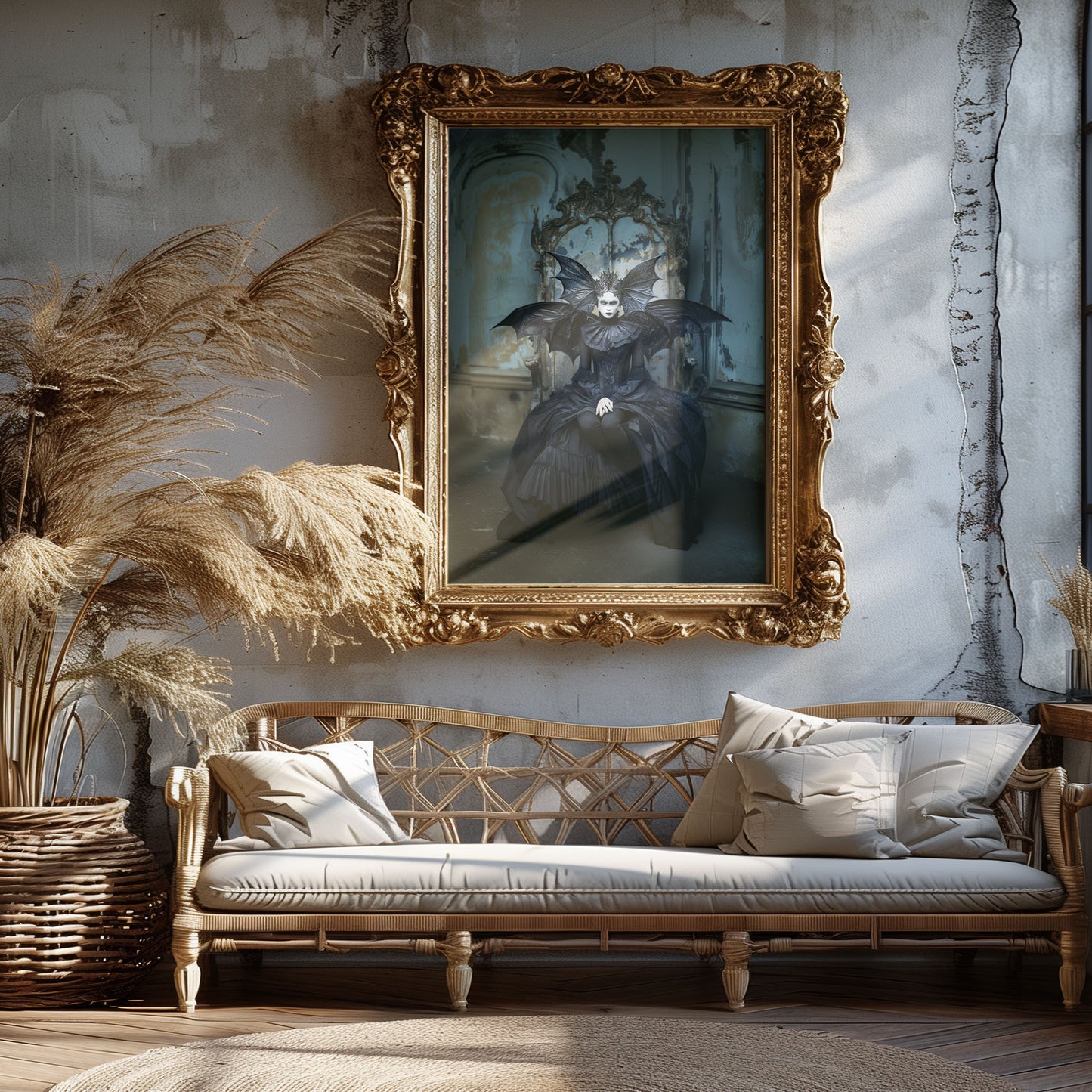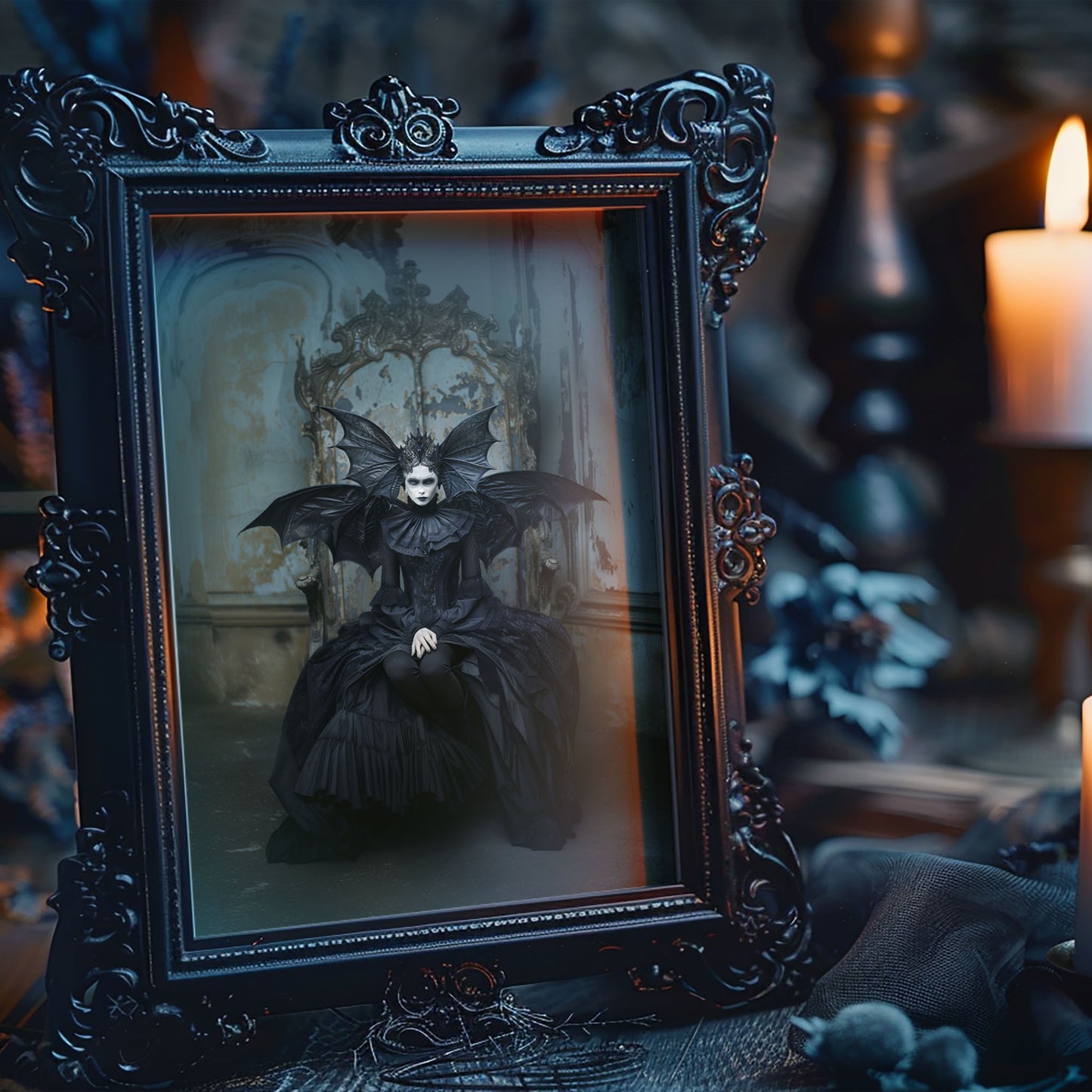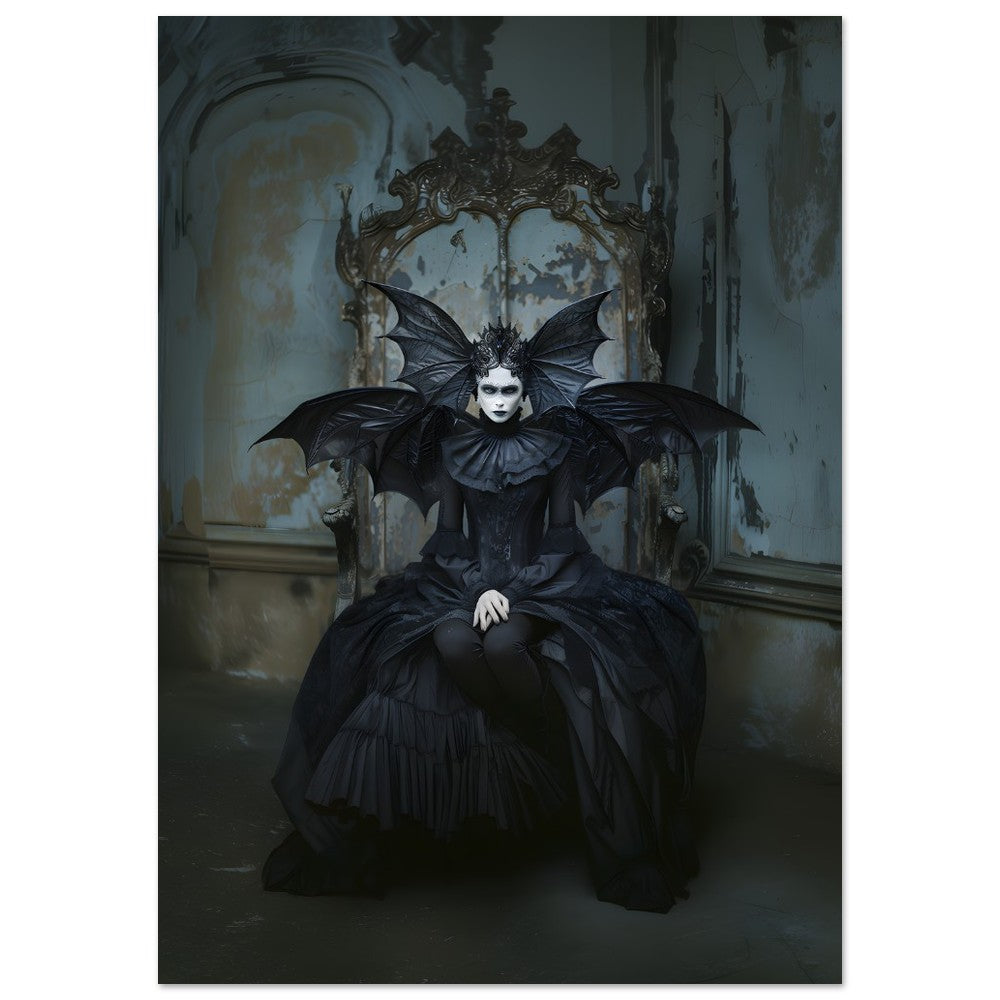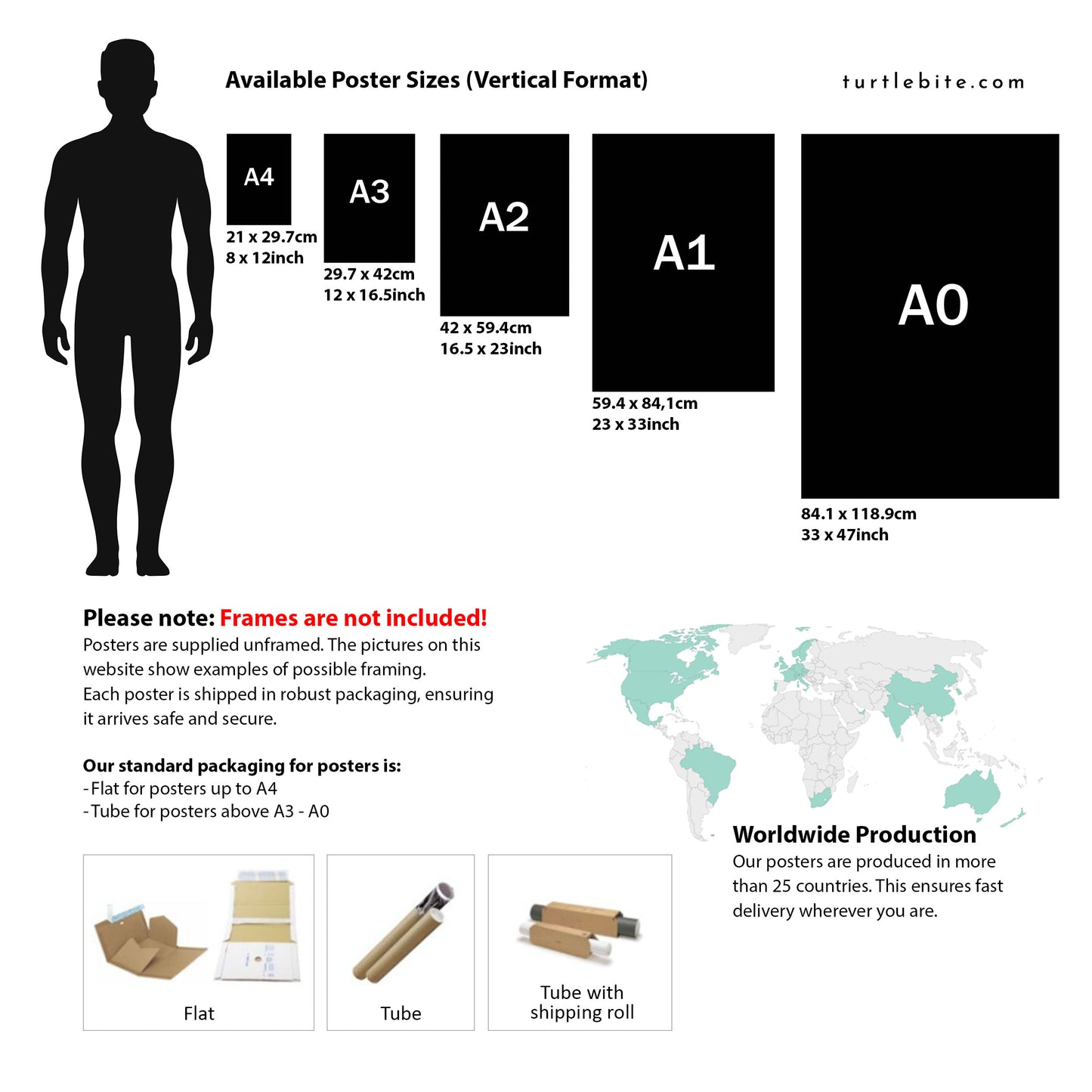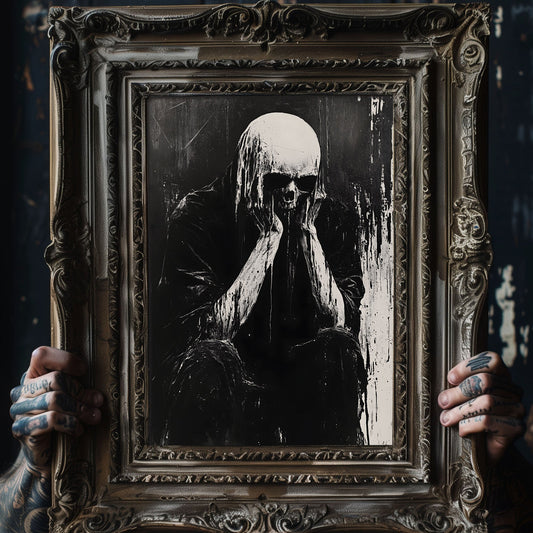
Gothic Art Reimagined: A Portrait of Power, Decay, and Dark Beauty
ChristianShare
Introduction: The Enduring Allure of Gothic Art
From crumbling cathedrals and Victorian mourning dresses to the dramatic contrasts of light and shadow, gothic art has always lived on the fringes of beauty and terror. It is a genre rooted in emotion, symbolism, and contradiction - where decay meets grandeur, and horror walks hand-in-hand with elegance. In the modern age, gothic aesthetics continue to evolve, thriving not only in paintings and literature but also in photography, digital media, and high-concept portraiture.
One such captivating example is a recent gothic portrait that has surfaced in visual culture circles - a regal figure clad in intricate black, seated on a decaying throne, her wings spread like a bat cloaked in velvet night. This image doesn’t just reflect gothic art - it is gothic art. Let’s step into this chilling yet mesmerizing tableau and unpack its depth, design, and symbolic power.
The Subject: A Gothic Queen Brought to Life
At the center of the image is a gothic queen, composed and hauntingly beautiful. Her dress, an opulent cascade of black textures - lace, velvet, and pleated fabric - draws from Victorian funeral fashion and baroque styling. The silhouette is dramatic, with puffed sleeves, high collars, and intricate detailing that elevates her status as a symbol of dark nobility.
But what immediately steals the eye are her wings - vast, black, and sculpted like those of a bat. These wings are not soft or angelic; they are sharp, architectural, and predatory. They twist her into a mythical being, perhaps a vampire queen or a creature from a dark fairytale. Her makeup, porcelain-pale with dark, hollowed eyes and black lips, strips away warmth, turning her into a spectral icon.
This fusion of regal attire and monstrous features lies at the very heart of gothic art. It thrives on duality - beauty laced with dread, life intertwined with death.
The Throne and Setting: A Kingdom of Ruins
The queen’s throne is an ornate, baroque artifact - golden, curling, and full of forgotten opulence. But its glory is fading, chipped and stained, just like the walls behind it. The room is no longer royal. Paint peels from the plaster, moisture stains creep across the surfaces, and the once-grand palace is clearly crumbling.
This choice of setting is profoundly gothic. The decay enhances the drama. It is not simply a backdrop - it is a metaphor. Gothic art often places its subjects in spaces touched by time, memory, and neglect, underscoring a fascination with ruin and the ghosts of history. Here, the throne room becomes a cathedral of abandonment - a shrine to fallen empires and enduring loneliness.
Symbolism and Mythology in Gothic Imagery
The symbolism in this image runs deep. The wings are central to its visual power and thematic message. Bat wings traditionally suggest nocturnality, hidden knowledge, and fear - but also freedom, transformation, and heightened perception. In gothic mythology, bats are associated with vampires and witches - beings that traverse the borderlands between life and death, human and monster.
The throne anchors the queen’s authority. She is not simply a mythical creature - she is a ruler, presiding over desolation. The contrast between her pristine posture and the decay around her implies permanence in impermanence. This is a common theme in gothic art: power surviving ruin, elegance amid erosion.
The darkness that envelops the room, contrasted by the soft illumination on her face and wings, mimics the chiaroscuro technique used in gothic painting - where deep shadows and intense highlights heighten emotional drama and emphasize moral complexity.
Gothic Art in the Modern Age
Historically, gothic art began in the 12th century with soaring cathedrals and stained-glass windows designed to awe and instruct. By the 18th and 19th centuries, the gothic aesthetic found new life in literature (think Mary Shelley’s Frankenstein or Bram Stoker’s Dracula) and painting (with romantic artists like Caspar David Friedrich or Henry Fuseli). Themes of isolation, supernatural horror, and psychological tension became central.
In contemporary times, gothic art has moved beyond canvas and paper. It now thrives in photography, digital illustration, cinema, and fashion editorials. The portrait we’re exploring is a perfect example of this evolution - it borrows from the past but speaks in a modern visual language. High-resolution photography, sophisticated costume design, and digital enhancement allow today’s gothic artists to build immersive visual worlds that feel both timeless and immediate.
Fashion as Expression in Gothic Art
Fashion plays a vital role in this portrait. Gothic fashion has long been about more than aesthetics - it’s a form of identity, storytelling, and resistance. The queen’s dress echoes mourning garb from the Victorian era, where clothing was used to display grief and social status. The detailing - the lace, corsetry, and length - nods to the weight of tradition.
Her crown, likely made of black metal or dark stone, crowns her as a sovereign of shadows. This blending of elegance and morbidity is central to gothic fashion, and by extension, gothic art. Every ruffle, shadow, and seam contributes to the larger narrative of who she is - an eternal figure who refuses to vanish into time.
Emotional Impact: Why We’re Drawn to the Dark
Gothic art, like this portrait, speaks to something primal in us. The queen’s cold stare, her supernatural wings, the lonely ruin around her - all evoke a sense of awe, melancholy, and curiosity. Why are we drawn to these moods? Because gothic art creates space for the emotions we often suppress: fear, loss, longing, and the sublime experience of the unknown.
There’s catharsis in confronting darkness through art. By embodying fear in beauty, gothic artists give us a way to process complex emotions. This portrait, with all its theatrical elegance, reminds us that darkness can be beautiful, and sorrow can be powerful.
Gothic Art as Visual Storytelling
What makes this portrait unforgettable is its ability to tell a story without words. It invites the viewer to imagine a world - perhaps a fallen kingdom, a forbidden ritual, or an immortal queen guarding ancient secrets. This is a hallmark of gothic art: it is inherently narrative.
It doesn't just depict, it suggests. It asks questions:
- Who is she?
- What power does she hold?
- What happened to this crumbling palace?
- Is she mourning… or waiting?
This open-endedness is a gift. It allows viewers to create their own mythology, to project meaning, to immerse themselves in a world beyond their own.
Conclusion: The Living Legacy of Gothic Art
This portrait is more than just a beautiful image - it is a powerful modern embodiment of gothic art. Through rich symbolism, dramatic fashion, and atmospheric decay, it speaks to a long-standing tradition of exploring the beauty in darkness. Gothic art has never been about horror for horror’s sake - it’s about confronting the unknown, revealing the hidden, and finding grace in the grotesque.
As long as we remain fascinated by what lies beneath the surface - by our shadows, our history, our fears - gothic art will endure. And portraits like this, where myth, beauty, and mystery collide, will continue to mesmerize those drawn to the darker corners of imagination.


